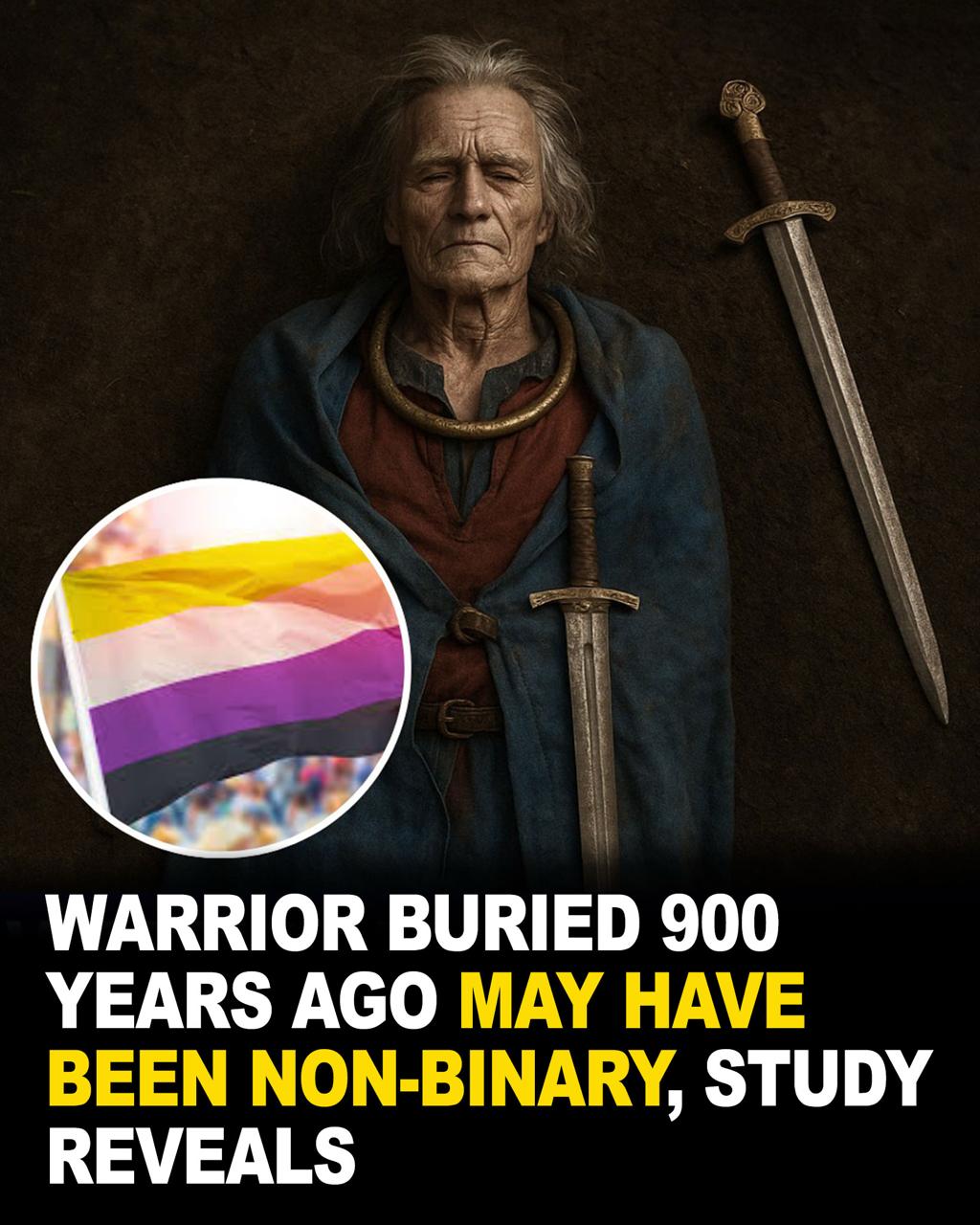A centuries-old mystery hidden beneath a quiet Finnish hillside has taken an unexpected turn, challenging long-standing beliefs about gender identity in early European history. Recent analysis of ancient DNA has led researchers to a groundbreaking conclusion: a medieval warrior buried in Suontaka Vesitorninmäki, southern Finland, may have been nonbinary. This revelation is prompting scholars to reconsider assumptions about how gender was perceived and expressed in medieval societies.

The grave, originally discovered in 1968, was long believed to belong to a high-ranking woman warrior. Archaeologists based this theory on the mix of grave goods found at the site—a sword, symbolizing masculinity and warrior status at the time, alongside jewelry and fragments of woolen clothing typically associated with women. For decades, this combination of items was interpreted as evidence that the person buried was a powerful woman who defied gender expectations. However, a recent study published in the European Journal of Archaeology suggests a more complex identity. Through careful extraction and analysis of ancient DNA, researchers discovered that the individual likely had Klinefelter syndrome, a genetic condition in which a person is born with an extra X chromosome, resulting in an XXY pattern.
According to the National Health Service, individuals with Klinefelter syndrome are anatomically male but often exhibit physical traits that fall outside conventional male or female categories, such as low testosterone, breast development, and infertility. Lead researcher Ulla Moilanen, an archaeologist at the University of Turku, believes that if the individual’s physical characteristics were noticeable, they may not have been seen as strictly male or female by their community. The inclusion of both masculine and feminine burial items suggests that this person may have held a unique and respected role in society, one that transcended binary gender classifications. Even though the skeletal remains were heavily degraded, researchers used modeling and advanced genetic testing to determine with high confidence that the individual had an XXY chromosome configuration.
The grave itself further supports this interpretation, as it was unusually rich in both martial and decorative artifacts, indicating that the individual was not just accepted but may have been honored. What makes this discovery particularly compelling is its historical context. Early medieval Scandinavian culture was known for its rigid gender norms, especially within warrior communities, where masculinity was strongly emphasized. Men who displayed feminine traits or behaviors were often ridiculed or marginalized. Yet, this individual appears to have lived in defiance of those norms and was still afforded a burial that reflects high status and respect. Moilanen points out that while today’s terminology—such as “nonbinary”—can be useful in interpreting past gender diversity, applying modern labels to historical individuals must be done carefully.
Personal identity is deeply nuanced, and without direct evidence of how this person saw themselves, any conclusions remain speculative. Additionally, not all people with Klinefelter syndrome in modern times identify as nonbinary or intersex, highlighting the complexities involved in translating ancient identities into contemporary terms. Despite these limitations, the study has been widely praised for its contributions to the broader conversation about gender and history. Leszek Gardela, a researcher at the National Museum of Denmark who was not involved in the project, called the case “well-researched and fascinating,” noting that it challenges simplistic views of gender in early societies and opens the door to a more inclusive understanding of the past. The implications of this discovery are profound. It reminds us that gender diversity is not a recent phenomenon but has likely existed across cultures and centuries, even if it was not always recorded or acknowledged in traditional historical narratives. As science continues to shed light on the lives of those who came before us, we are uncovering not only their bones and belongings but also their stories—stories that reveal a rich tapestry of human experience far more complex and inclusive than we may have imagined.





